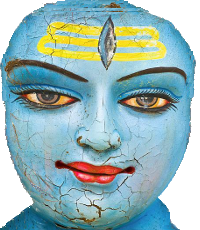Shadow puppets
One of the arts spread through the indianization of Southeast Asia is shadow puppetry. Shadow puppets have a long history in India and different parts of the sub-continent have their own versions of the art. The shows are usually staged during Hindu festivals and stories drawn from Indian epics feature prominently. [Read more: “The Mahabharata“] Sometimes the shows are performed by families of itinerant puppeteers.
This tradition has been picked up all over Southeast Asia. In Indonesia it is known as wayang or wayang kulit, and is common in Java and Bali. In Javanese, wayang means “shadow,” “imagination” or “spirit,” and kulit means “skin” – the puppets here are usually made of leather. The flat puppets have movable joints that are animated by using rods. A skilled puppeteer can make the shadows walk, dance, fight, nod and laugh. In Bali the performance typically starts at night and continues until dawn. A complete troupe of wayang kulit performers also includes singers and gamelan players – the gamelan is an ensemble of musicians who play various traditional percussion instruments. Shadow puppets have been popular in Cambodia, Thailand, Laos and Malaysia too. Here too the performances are staged during temple festivals and story-lines from Indian epics are common. The shadows are cast using oil or halogen lights onto a cotton cloth background.
There is concern regarding the future of shadow puppetry. The art is well documented in museums, and it is commonly performed for tourists, but it is rather more uncertain whether it will survive as a genuinely popular form of entertainment. There is today a lot of competition from other forms of shadow plays – movies, television, YouTube clips. In 2003, Unesco designated wayang kulit, as an example of a “masterpiece of oral and intangible heritage of humanity.”
External links
- “Observations on the historical development of puppetry”
- “Ramayana: Indonesian Wayang Show”
- “Shadow Puppets: Indian Myths and Legends”
- Center for Puppetry
- Fan Pen Chen, “Shadow Theaters of the World,” Asian Folklore Studies, 2003
- Robert Gutunoiu, “Wayang-Kulit: Indonesian Shadow Puppets”
- The Contemporary Wayang Archive
- UNESCO, “Sbek Thom, Khmer shadow theatre”
- Wayang Golek Puppets

